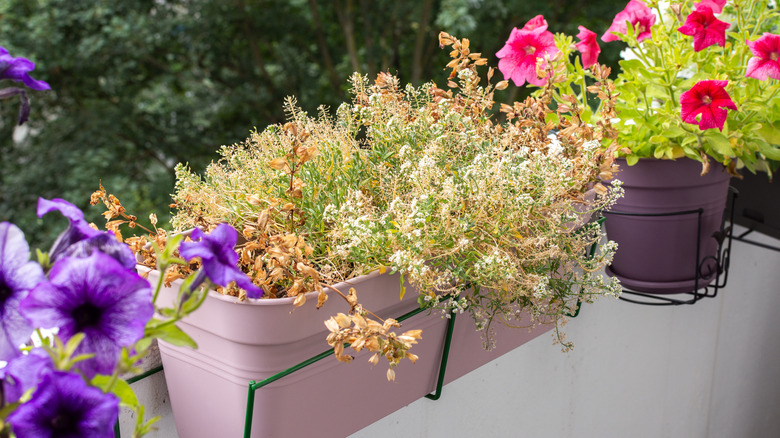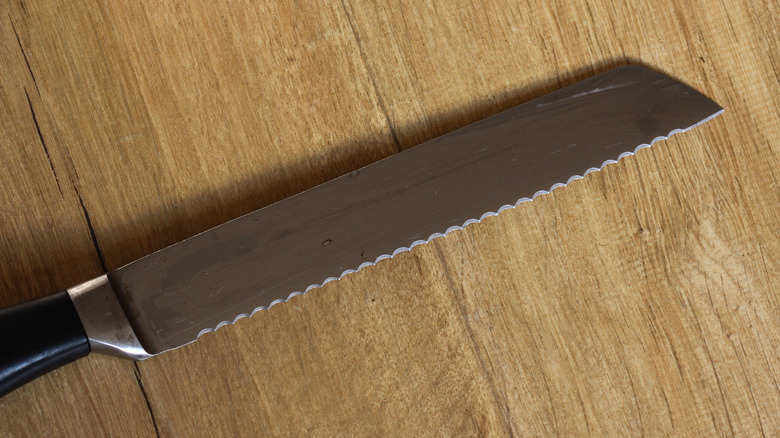The Easiest Way To Remove Dead Potted Plants Is Already In Your Kitchen
Whether it's the turn of the season or simply just the end of a plant's life cycle, at some point, greenery needs to be removed from its planter. Yet, many gardeners or plant enthusiasts are likely to invest time, money, and energy into designing a visually-stunning planter. Because of this, they may not want to sacrifice all of their efforts simply because only one of the plants in the container has died. Fortunately, not all of the other plants need to be sacrificed, as you can easily remove just the dead plant from the pot with a serrated kitchen knife.
Rather than starting over completely, you can still salvage the remaining lifetime of the surviving plants. While many may be tempted to simply pull the plant out of the container by the roots, this method is dangerous because it can damage the roots of other plants or disturb their foliage. This is especially true if you need to exert vigorous effort to successfully remove the deceased plant. Nevertheless, you probably have an easy solution waiting for you in your kitchen, as you can use a serrated knife. This tool, though often designed for tough meats or crusty breads, will also help you cut around the spent foliage that may otherwise seem difficult to remove.
Removing and replacing spent plants
To remove dead potted plants with a serrated knife, start by disinfecting the knife using warm, soapy water. Once clean, gently slide the knife around the edge of the plant you'd like to remove, separating the plant's roots from the soil. Be careful not to damage the healthy plants nearby. Also, be sure to use a long-enough knife to cut deeply toward the bottom of the pot in order to remove the entire root ball of the deceased plant, but not so low that you damage the interior of the pot. Once the roots are loosened, carefully lift the dead plant out of the planter, ensuring that the soil remains intact.
Shake off any excess soil from the roots and dispose of the dead plant, preferably in an outdoor DIY compost pile if didn't die from a fungal or bacterial infection. If it did die from a disease, be sure to keep the carcass away from any healthy plants in order to contain the disease. Dispose of the dead plant in the trash instead. You should have a decent-sized hole left behind that can be filled with a seasonally-appropriate replacement. Your carved-out space will be longing for a new friend and the opportunities are endless. Be sure to wash the knife again before returning it for use in your kitchen.

